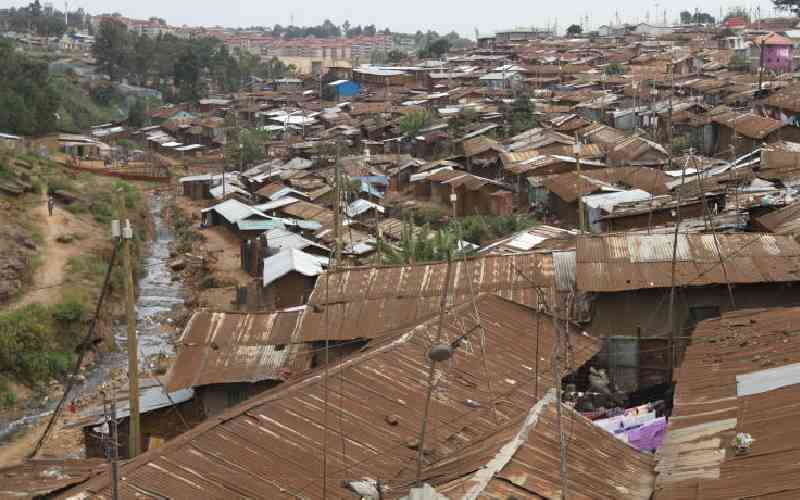Soon, world leaders will assemble in Kuala Lumpar for the ninth series of the World Urban Forum and exchange ideas while predicting our urban future.
Meetings like this one that focus on urban issues are important because currently, the world is 54 per cent urban, with countries like Singapore standing at 100 per cent and Kenya at 26 per cent.
As cities have grown, however, there have been extreme cases of urban decay and degeneration.
In the Global North, this was occasioned after World War II due to de-industrialisation and outsourcing that saw a slow decline in the manufacturing sectors, whereas in regions like sub-Saharan Africa, the urban sprawl, mismanagement and poor planning have caused it.
This is where urban regeneration can help. According to authors Peter Roberts and Hugh Sykes, urban regeneration is a comprehensive and integrated vision and action to address urban problems through a lasting improvement in the economic, physical, social and environmental condition of an area.
It’s about jobs, investments and wealth creation; it’s a balance of people and power.
Urban regeneration moves beyond the aims, aspirations and achievements of urban renewal, which is seen more as a physical improvement of cities. Urban redevelopment and urban revitalisation identifies and calls for improvement actions.
Nairobi slums
We can see this occurring in Kenya. A UN-Habitat urban sector profile shows that in Kenya’s capital, Nairobi slums absorb 75 per cent of the urban population growth and this is expected to double in the next 15 years.
This has been made possible by the development of a series of informal settlement pockets, or slums, in all districts of the city.
Most slums have an absolute lack of basic services such as garbage collection, security, water and sanitation.
The housing shortage is also a significant problem, particularly for the poor. The Government estimates a housing deficit at 200,000 units per year. Borne out of this shortage, the Government should develop a comprehensive urban regeneration strategy.
This strategy should aim not only to return the shortage to a market equilibrium situation - where housing supply equals demand and where the sector is operating at a sustainable level - but it should also revitalise jobs, attract investments and create wealth.
While the strategy alone will not put an end to the housing supply problems, which are multi-faceted and require a comprehensive and co-ordinated approach, the intention is that it will help to start addressing the urban challenges.
This strategy can build on existing work. In the 1990s, for instance, several global efforts were put in place through the support of UN-Habitat, under the “Localising Agenda 21” (LA21), a UN framework that was supposed to yield tangible and practical results and impacts through urban planning and management.
Stay informed. Subscribe to our newsletter
In Kenya, Nakuru town was selected for the modelling and development of a ‘strategic structure planning’ process.
Planning process
This was an exhaustive consultative and inclusive planning process looking at the short-term and long-term dynamics of urban development.
In this effort, and with broad-based collaborations of local, national and bilateral support, several poor neighbourhoods were selected for piloting on settlement improvements, housing redevelopment and environmental management.
Among the biggest gains from this process were the emergence of several community-based organisations and local non-government agencies as well as strengthened capacities at local levels for action.
However, there was still notable laxity and lack of firm commitment by the municipal authorities to implement the agenda and lack of tapping into the financial resources available from the private sector during the dialogue. Current and future urban regeneration strategies should address these issues.
The lessons learnt across the last two decades of the LA21 should more importantly inform the ‘New Urban Agenda’ launched in Ecuador last year by UN-Habitat during Habitat III.
Still stands
With the strong remnants of the LA21, Nakuru still stands as the best urban location for the continuation of the dialogue and implementation of the New Urban Agenda in Kenya.
Perhaps the most important planning lesson to be learned in most efforts of urban regeneration is that it is people - whether in public-private partnerships, public sector leadership, private sector involvement or local citizens - who are the real key to change.
Successful regeneration projects need to facilitate engagement of all stakeholders, including residents, ensure affordability and access of the intended actions and bring together the different stakeholders towards a jointly negotiated vision.
Mr Kuria is an Aspen Institute New Voices Fellow and a PhD researcher on project management in Kenya
 The Standard Group Plc is a
multi-media organization with investments in media platforms spanning newspaper
print operations, television, radio broadcasting, digital and online services. The
Standard Group is recognized as a leading multi-media house in Kenya with a key
influence in matters of national and international interest.
The Standard Group Plc is a
multi-media organization with investments in media platforms spanning newspaper
print operations, television, radio broadcasting, digital and online services. The
Standard Group is recognized as a leading multi-media house in Kenya with a key
influence in matters of national and international interest.
 The Standard Group Plc is a
multi-media organization with investments in media platforms spanning newspaper
print operations, television, radio broadcasting, digital and online services. The
Standard Group is recognized as a leading multi-media house in Kenya with a key
influence in matters of national and international interest.
The Standard Group Plc is a
multi-media organization with investments in media platforms spanning newspaper
print operations, television, radio broadcasting, digital and online services. The
Standard Group is recognized as a leading multi-media house in Kenya with a key
influence in matters of national and international interest.








